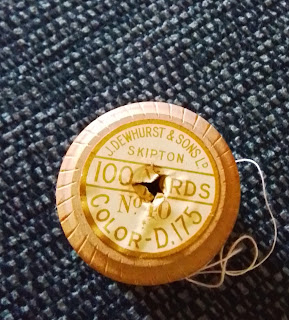The British Cotton Industry in the mid 20th Century
Extracts from Peter Hennessy's 'Never Again - Britain 1945-51' (Penguin, 1992)
Two of the staple industries which had given Britain much of its Victorian economic supremacy - cotton and shipbuilding - were saved then revived by the demands of renewed war after 1939. In the 1930s, the Bank of England had led a rescue of the Lancashire textile industry, reeling from recession and the rise of competitors in India and Japan. The introduction of tariffs after 1932, when the national government engineered a strategic change of economic direction with a general shift from free trade to protection, had saved the home market for Lancashire but not the world market in which it had held sway overwhelmingly until 1914. By 1939, Lancashire had only half the spinning and weaving capacity in use in 1920 and the national workforce in cotton goods had shrivelled from 600,000 to 350,000 over the same period.
(This seems at odds with the display of confidence shown by the ESCC in the early 30s with the building of Arkwright House.)
The industry was saved by the fabric of war from the parachute to the ubiquitous battledress worn by the squaddie and civil defence worker alike. So great were the demands of the military that civilian consumption of cotton and linen was cut by almost a third in the first year of the war...
(The Sylko reels in military colours were then a canny move to boost sales.)
So keen was the Attlee government to revive cotton as an export that a substantial recruitment drive was mounted complete with its own advertising campaign. Factories were made safer, the machinery laid out more rationally, but, ominously, British mills still lagged far behind American in terms of automatic looms and the new ring spinning techniques....The war had given cotton a reprieve, not a pardon.
(That Sylko reels were being exported in large numbers to Comminwealth countries has some context with this.)





Comments
Post a Comment